New Approach of Normal and Shear Stress Components for Multiple Curvilinear Holes Which Weakened a Flexible Plate
Abstract
:1. Introduction
2. Basic Equations
3. Conformal Mapping and Special Cases
- i.
- ii.
- iii.
4. The Method of Solution
5. Applications
6. Conclusions
- When , the component of the stress acts as a tensile force. The normal and shear stress component take the shapes of nonhomogeneous waves and form an angle with the x-axis; see Figure 14, Figure 23 and Figure 26. Furthermore, the stress ratio and represents the uniform oscillation; see Figure 15, Figure 16, Figure 24, Figure 25, Figure 27 and Figure 28.
- When , the component of the stress acts as a compression force. The normal and shear stress component take the shapes of compressed interfering waves and form an angle with the x-axis; see Figure 17, Figure 20 and Figure 29. Furthermore, the stress ratio and represents a compressed oscillation; see Figure 18, Figure 19, Figure 21, Figure 22, Figure 30 and Figure 31.
- Study the physical model when the complex potential functions are functions of time. Also, study it in the presence of external forces like flowing heat or a normal magnetic field.
- Study the anomaly model as an application in the medical field. For example, osteoporosis is characterized by a reduction in bone tissue volume and thickness. This causes the bones to weaken and break more easily. Another example is sickle cell anemia, an inherited condition in which red blood cells have an irregular crescent shape, block small blood vessels, and live a shorter life than normal red blood cells.
Author Contributions
Funding
Data Availability Statement
Conflicts of Interest
References
- Odishelidze, N.; Criado-Aldeanueva, F. Some axially symmetric problems of the theory of plane elasticity with partially unknown boundaries. Acta Mech. 2008, 199, 227–240. [Google Scholar] [CrossRef]
- Manickam, G.; Haboussi, M.; D’Ottavio, M.; Kulkarni, V.; Chettiar, A.; Gunasekaran, V. Nonlinear thermo-elastic stability of variable stiffness curvilinear fibres based layered composite beams by shear deformable trigonometric beam model coupled with modified constitutive equations. Int. J. Non-Linear Mech. 2023, 148, 104303. [Google Scholar] [CrossRef]
- Hsieh, M.-L.; Hwu, C. A full field solution for an anisotropic elastic plate with a hole perturbed from an ellipse. Eur. J. Mech. A Solids 2023, 97, 104823. [Google Scholar] [CrossRef]
- Kaloerov, S.; Glushankov, E.; Mironenko, A. Solution of problems of elasticity theory for multiply connected half-planes and strips. Mech. Solids 2023, 58, 1063–1075. [Google Scholar] [CrossRef]
- Li, C.; Huang, C.; Wang, S.; Cai, D. A modified laurent series for hole/inclusion problems in plane elasticity. Z. Angew. Math. Phys. 2021, 72, 124. [Google Scholar] [CrossRef]
- Akinola, A. On complex variable method in finite elasticity. Appl. Math. 2009, 1, 1–16. [Google Scholar] [CrossRef]
- Guo, J.; Lu, Z. Line field analysis and complex variable method for solving elastic-plastic fields around an anti-plane elliptic hole. Sci. China Phys. Mech. Astron. 2011, 54, 1495–1501. [Google Scholar] [CrossRef]
- Ioakimidis, N.I.; Theocaris, P.S. On a method of numerical solution of a plane elasticity problem. Stroj. Cas. 1978, 29, 448–455. [Google Scholar]
- Strack, O.; Verruijt, A. A complex variable solution for a deforming buoyant tunnel in a heavy elastic half-plane. Int. J. Numer. Anal. Methods Geomech. 2002, 26, 1235–1252. [Google Scholar] [CrossRef]
- Li, L.; Fan, T. Complex variable method for plane elasticity of icosahedral quasicrystals and elliptic notch problem. Sci. China Ser. G: Phys. Mech. Astron. 2008, 51, 773–780. [Google Scholar] [CrossRef]
- Yu, J.; Guo, J.; Xing, Y. Complex variable method for an anti-plane elliptical cavity of one-dimensional hexagonal piezoelectric quasicrystals. Chin. J. Aeronaut. 2015, 28, 1287–1295. [Google Scholar] [CrossRef]
- Jiao, Z.; Heblekar, T.; Wang, G.; Xu, R.; Chen, W.; Reddy, J. Analysis of plane elasticity problems using the dual mesh control domain method. Comput. Methods Appl. Mech. Eng. 2023, 416, 116342. [Google Scholar] [CrossRef]
- Abdou, M. First and second fundamental problems for an elastic infinite plate with a curvilinear hole. Alex. Eng. J. 1994, 33, 227–233. [Google Scholar]
- Abdou, M. Fundamental problems for infinite plate with a curvilinear hole having finite poles. Appl. Math. Comput. 2002, 125, 79–91. [Google Scholar] [CrossRef]
- Abdou, M.; Ibrahim, E.; Basseem, M. The stress and strain components for a weakened elastic plate by two curvilinear holes in presence of heat. Curr. Sci. Int. 2022, 11, 199–216. [Google Scholar]
- Abdou, M.; Khamis, A. On a problem of an infinite plate with a curvilinear hole having three poles and arbitrary shape. Bull. Calcutta Math. Soc. 2000, 92, 313–326. [Google Scholar]
- Abdou, M.; Monaquel, S. Integro differential equation and fundamental problems of an infinite plate with a curvilinear hole having strong pole. Int. J. Contemp. Math. Sci. 2011, 6, 199–208. [Google Scholar]
- Mattei, O.; Lim, M. Explicit analytic solution for the plane elastostatic problem with a rigid inclusion of arbitrary shape subject to arbitrary far-field loadings. J. Elasticity 2021, 144, 81–105. [Google Scholar] [CrossRef]
- Alhazmi, S.E.; Abdou, M.; Basseem, M. The stresses components in position and time of weakened plate with two holes conformally mapped into a unit circle by a conformal mapping with complex constant coefficients. AIMS Math. 2023, 8, 11095–11112. [Google Scholar] [CrossRef]
- Leonhardt, U. Optical conformal mapping. Science 2006, 312, 1777–1780. [Google Scholar] [CrossRef]
- Trefethen, L.N. Numerical conformal mapping with rational functions. Comput. Methods Funct. Theory 2020, 20, 369–387. [Google Scholar] [CrossRef]
- Caprini, I. Conformal mapping of the borel plane: Going beyond perturbative qcd. Phys. Rev. D 2020, 102, 054017. [Google Scholar] [CrossRef]
- Kiosak, V.; Savchenko, A.; Gudyreva, O. On the conformal mappings of special quasi-einstein spaces. AIP Conf. Proc. 2019, 2164, 040001. [Google Scholar] [CrossRef]
- Abdou, M.; Khar-El din, E.A. An infinite plate weakened by a hole having arbitrary shape. J. Comput. Appl. Math. 1994, 56, 341–351. [Google Scholar] [CrossRef]
- O’Donnell, S.; Rokhlin, V. A fast algorithm for the numerical evaluation of conformal mappings. SIAM J. Sci. Statist. Comput. 1989, 10, 475–487. [Google Scholar] [CrossRef]
- Fu, F.; Yang, X.; Zhao, P. Geometrical and physical characteristics of a class of conformal mappings. J. Geom. Phys. 2012, 62, 1467–1479. [Google Scholar] [CrossRef]
- Ghods, M.; Faiz, J.; Gorginpour, J.; Bazrafshan, M.A.; Nøland, J.K. Equivalent magnetic network modeling of variable-reluctance fractional-slot v-shaped vernier permanent magnet machine based on numerical conformal mapping. IEEE Trans. Transp. Electr. 2023, 9, 3880–3893. [Google Scholar] [CrossRef]
- Mukherjee, A.; Fok, P.-W. A new approach to calculating fiber fields in 2d vessel cross sections using conformal maps. Math. Biosci. Eng. 2023, 20, 3610–3623. [Google Scholar] [CrossRef]
- Wu, L.; Zhou, Z.; Zhang, J.; Zhang, M. A numerical method for conformal mapping of closed box girder bridges and its application. Sustainability 2023, 15, 6291. [Google Scholar] [CrossRef]
- Brociek, R.; Pleszczyński, M. Comparison of Selected Numerical Methods for Solving Integro-Differential Equations with the Cauchy Kernel. Symmetry 2024, 16, 233. [Google Scholar] [CrossRef]
- Zhou, Y.; Lin, Y. Solving integro-differential equations with Cauchy kernel. Appl. Math. Comput. 2009, 215, 2438–2444. [Google Scholar] [CrossRef]
- Stein, E.M.; Shakarchi, R. Functional Analysis: Introduction to Further Topics in Analysis; Princeton University Press: Princeton, NJ, USA, 2011; Available online: https://books.google.com.sa/books?id=OUaU-W-dpA0C (accessed on 22 August 2011).
- Althubiti, S.; Mennouni, A. A Novel Projection Method for Cauchy-Type Systems of Singular Integro-Differential Equations. Mathematics 2022, 10, 2694. [Google Scholar] [CrossRef]
- Jan, A.R.; Abdou, M.A.; Basseem, M. A Physical Phenomenon for the Fractional Nonlinear Mixed Integro-Differential Equation Using a Quadrature Nystrom Method. Fractal Fract. 2023, 7, 656. [Google Scholar] [CrossRef]
- Assanova, A.T.; Nurmukanbet, S.N. A Solvability of a Problem for a Fredholm Integro-Differential Equation with Weakly Singular Kernel. Lobachevskii J. Math. 2022, 43, 182–191. [Google Scholar] [CrossRef]
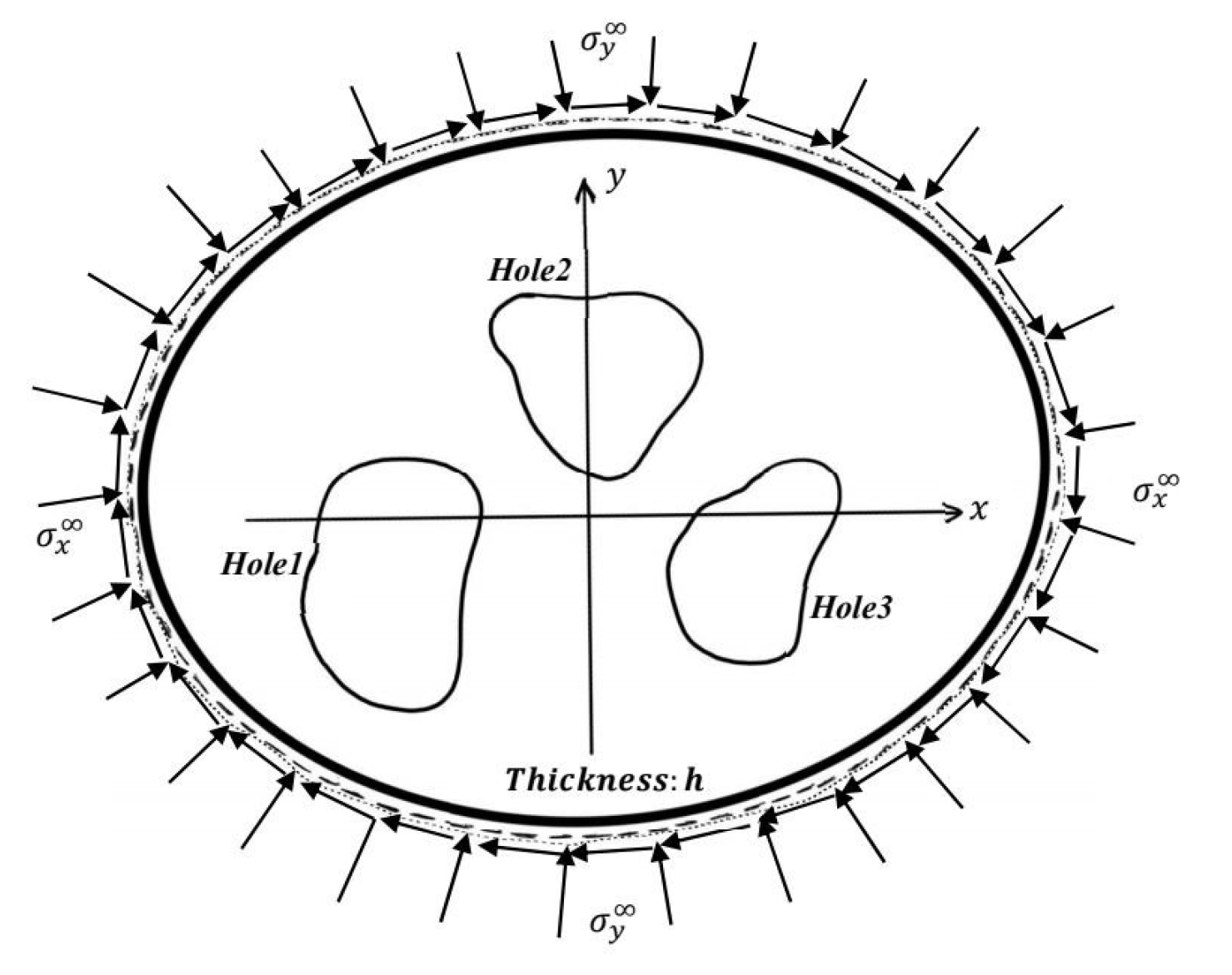



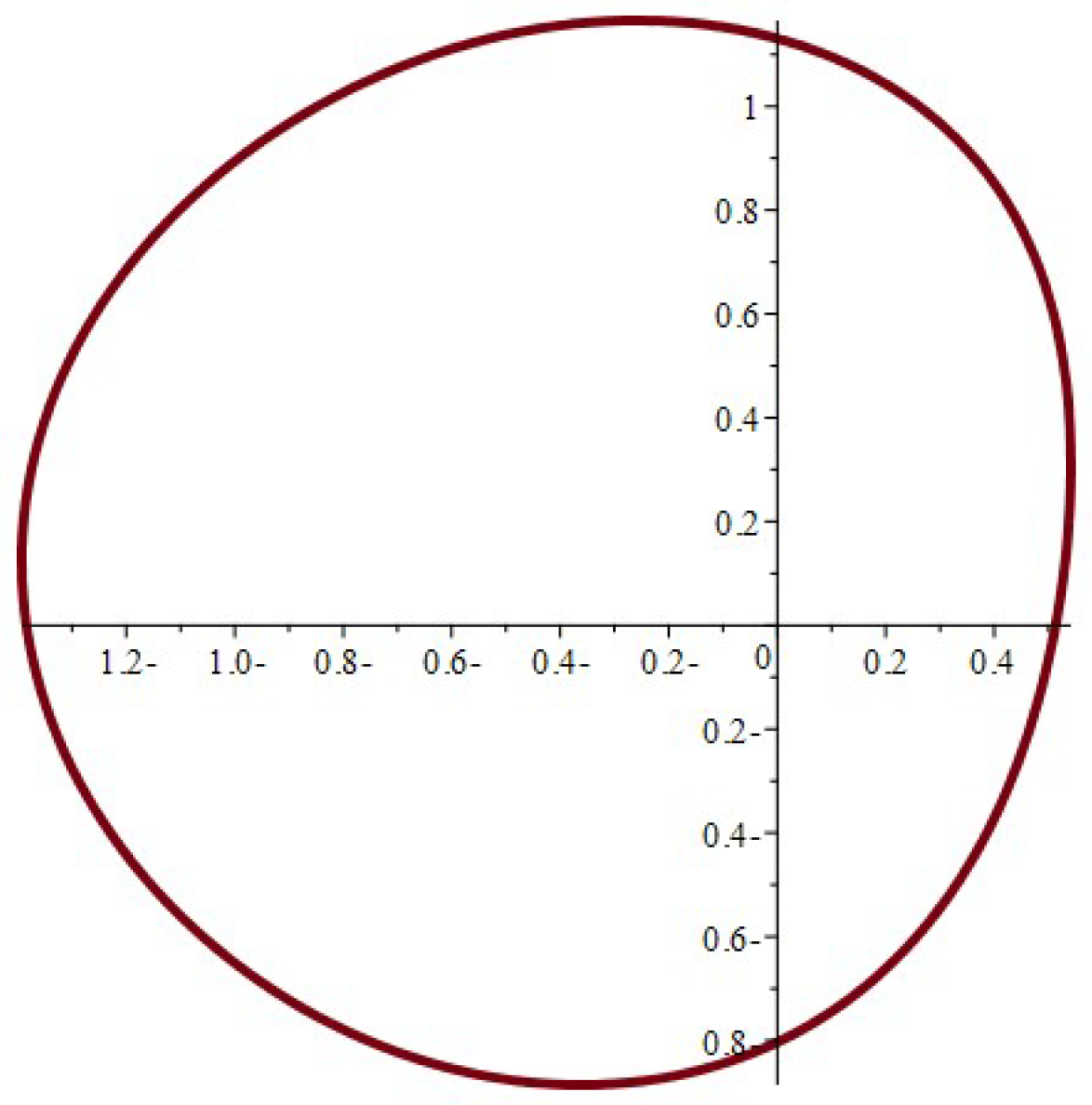
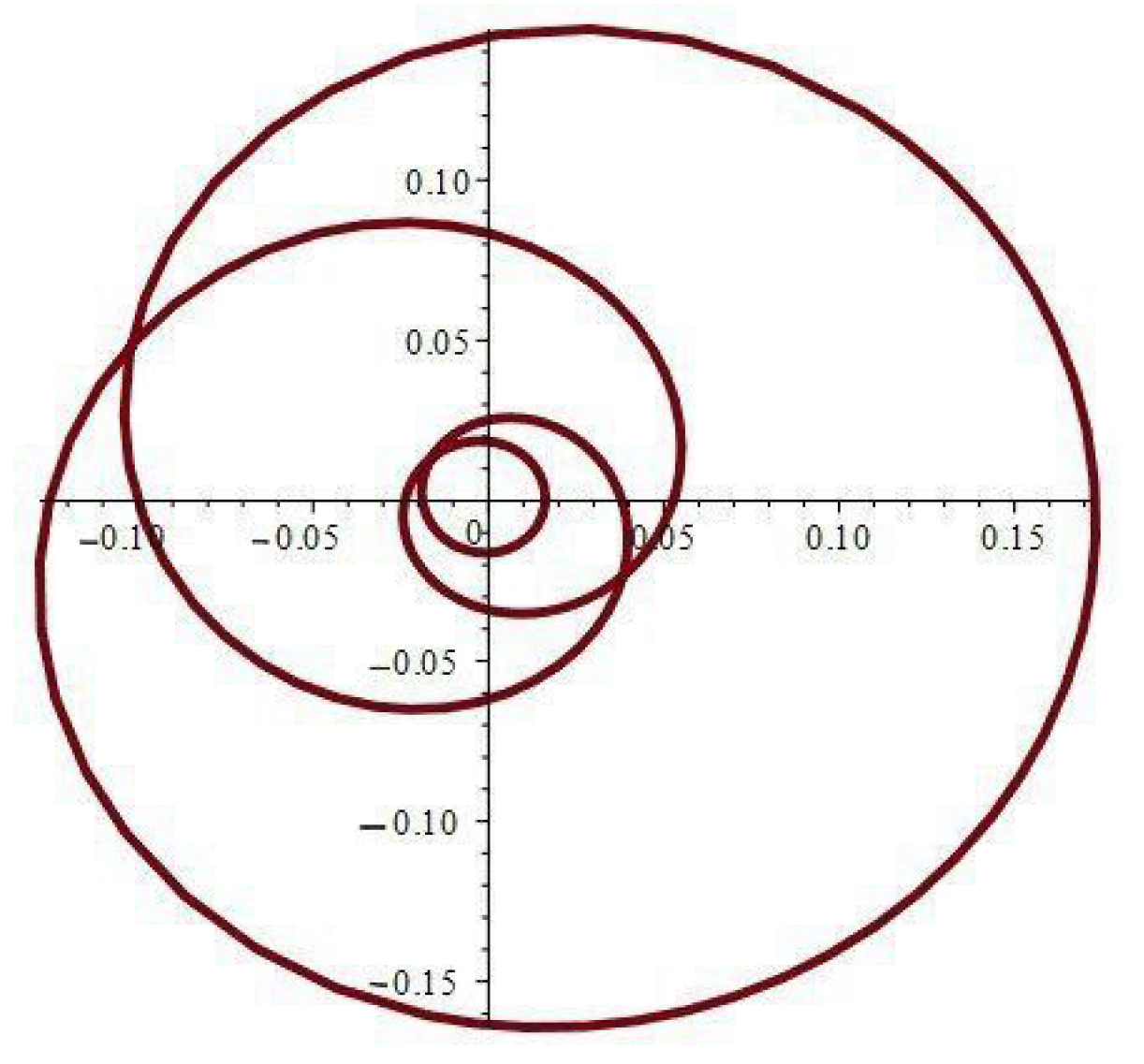
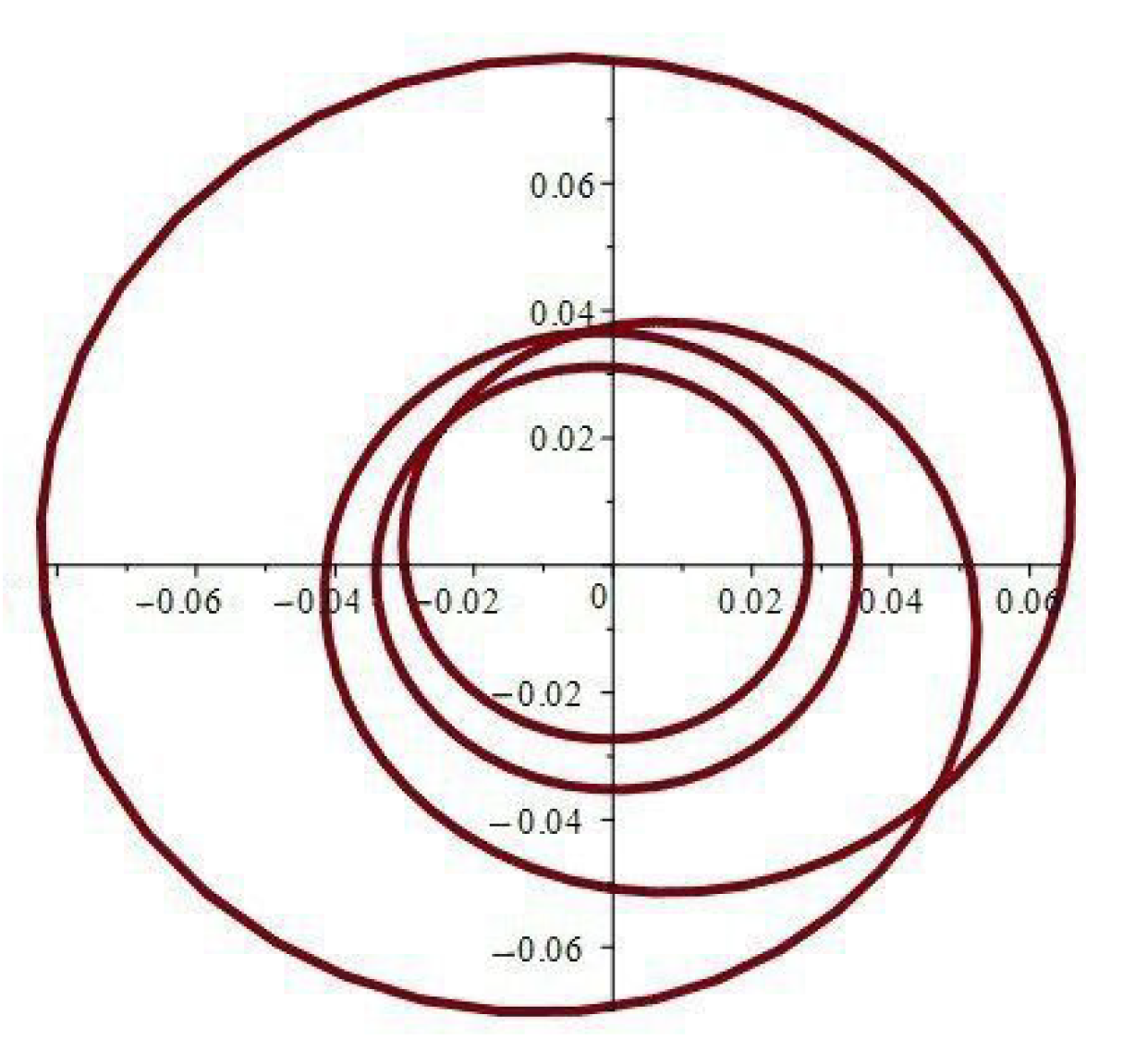


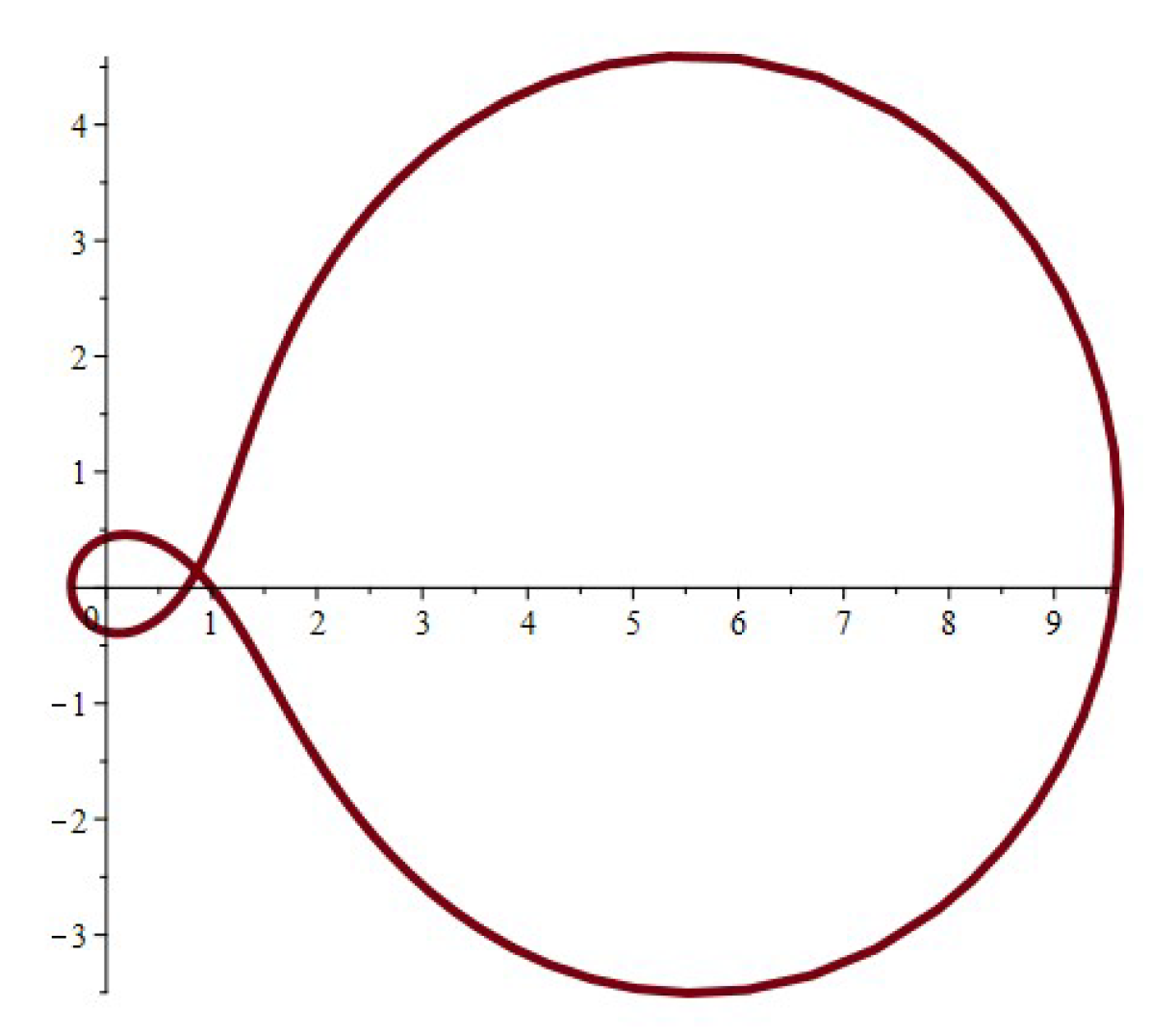
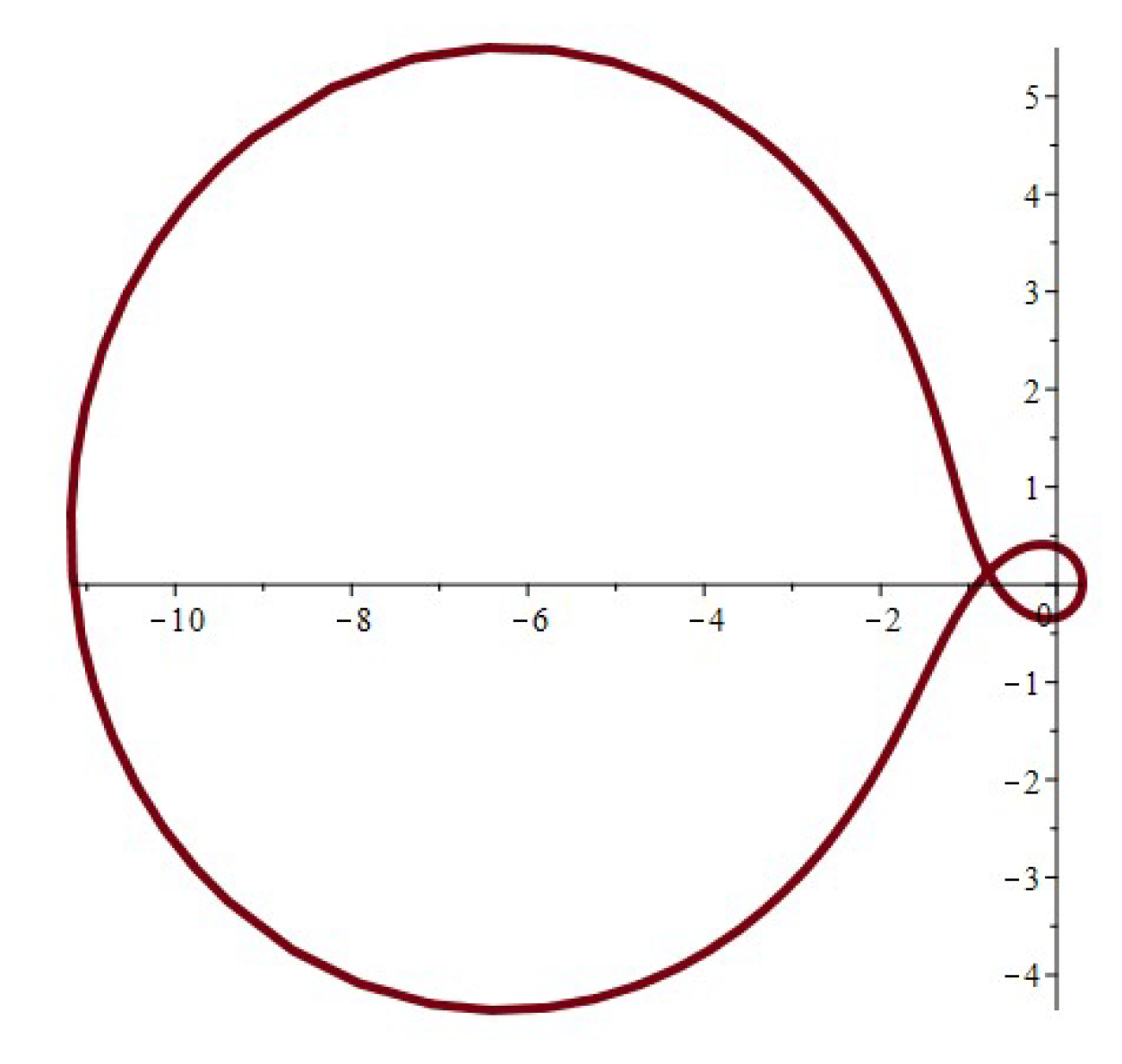


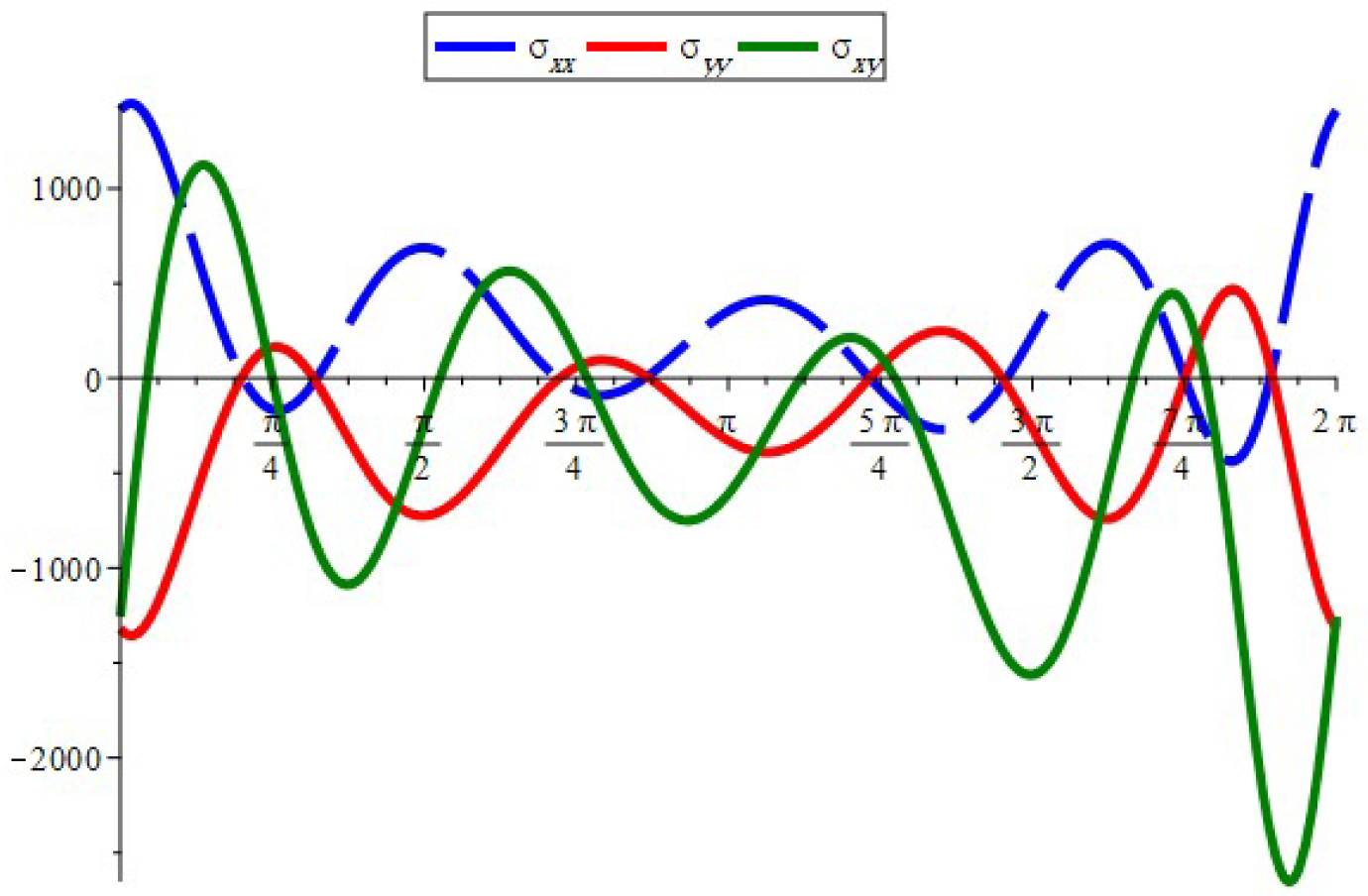
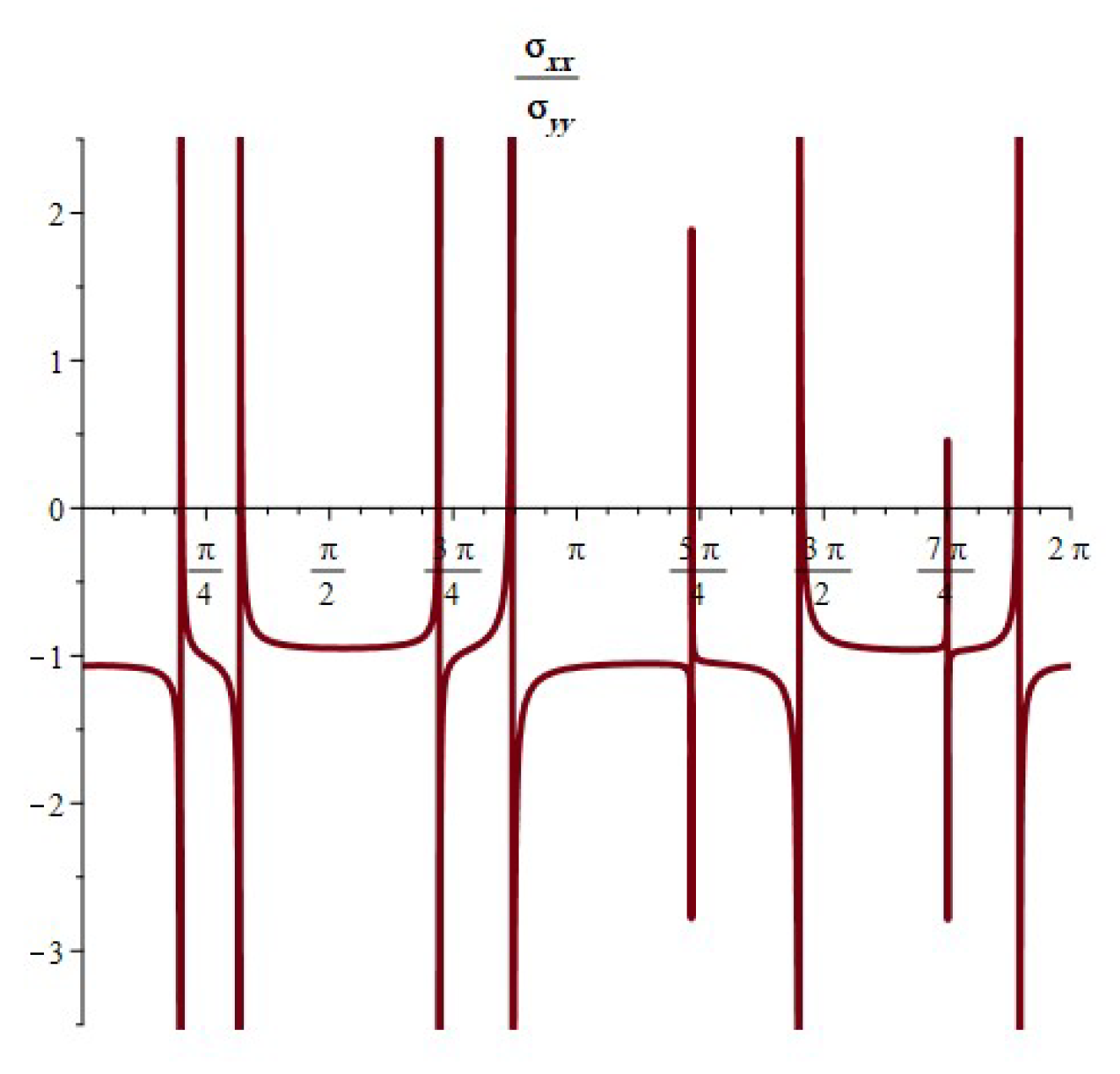
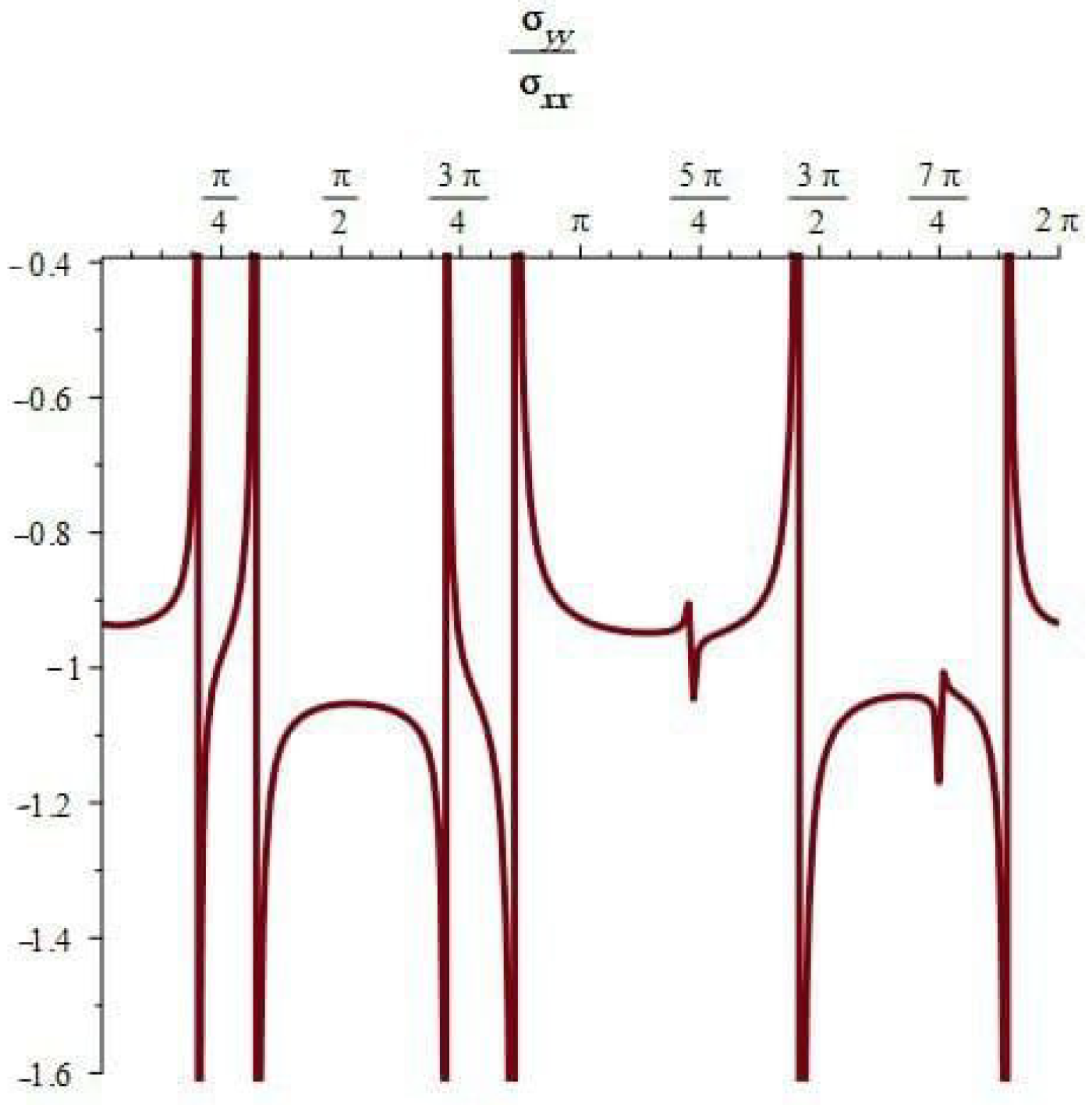




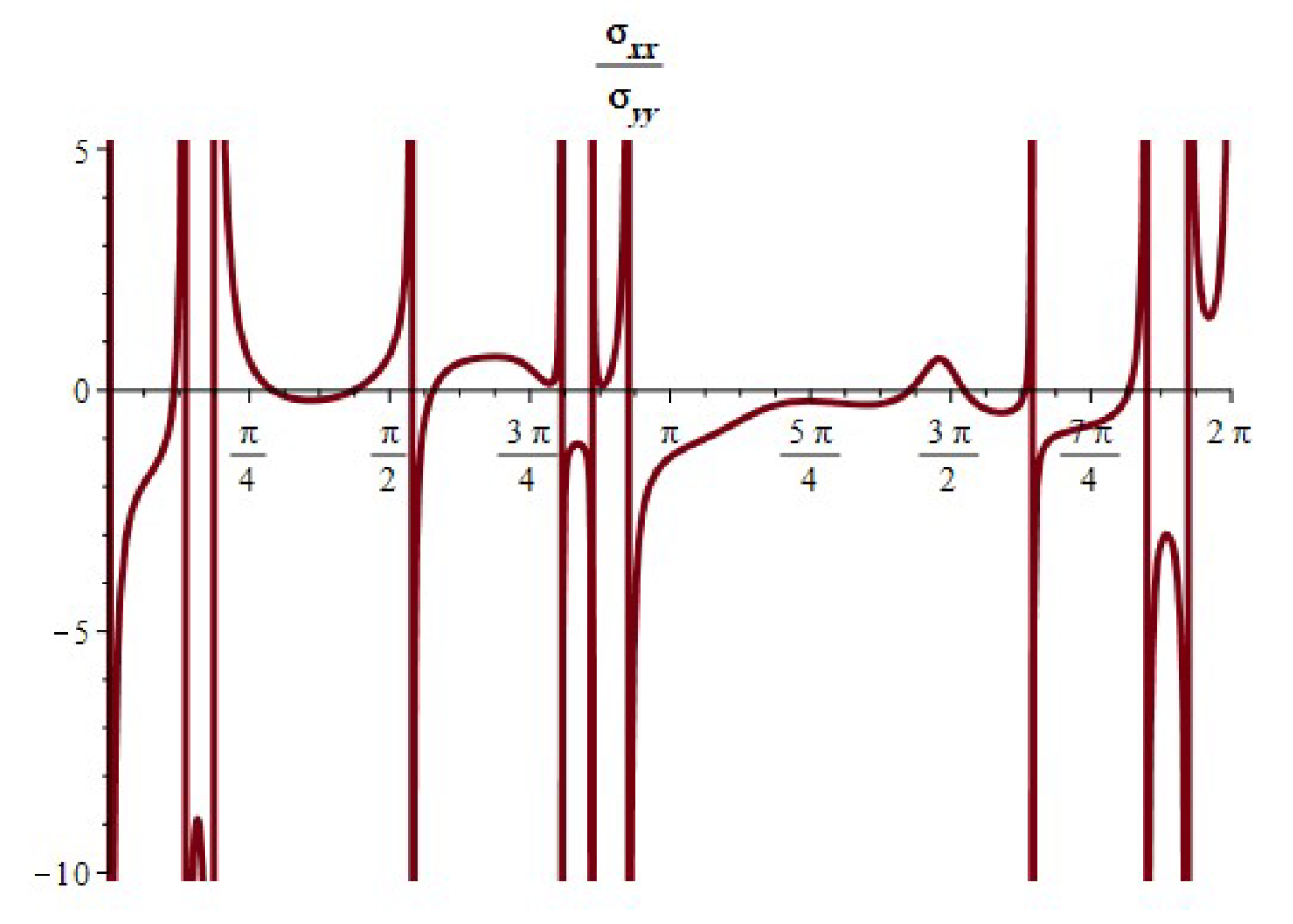
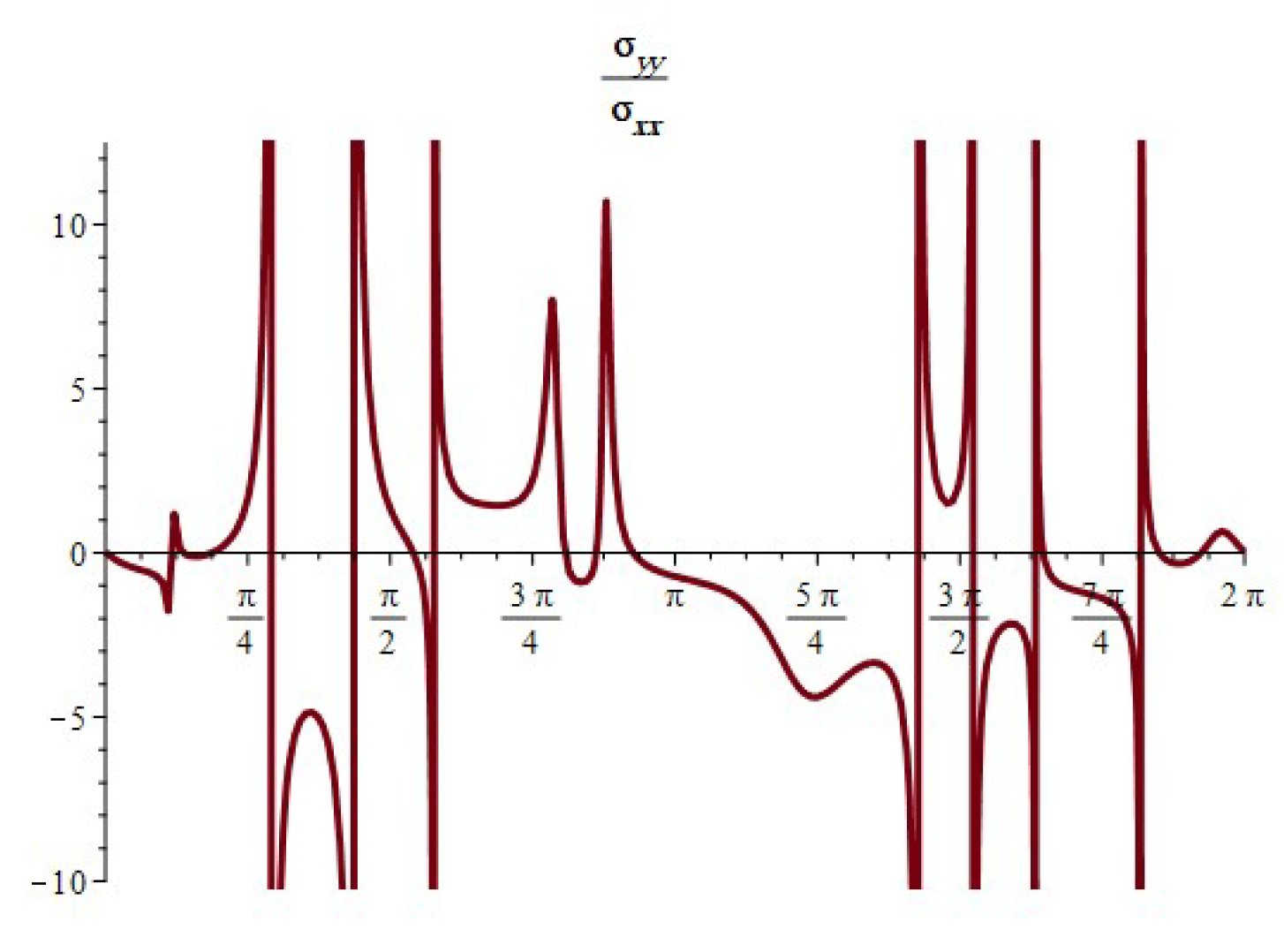
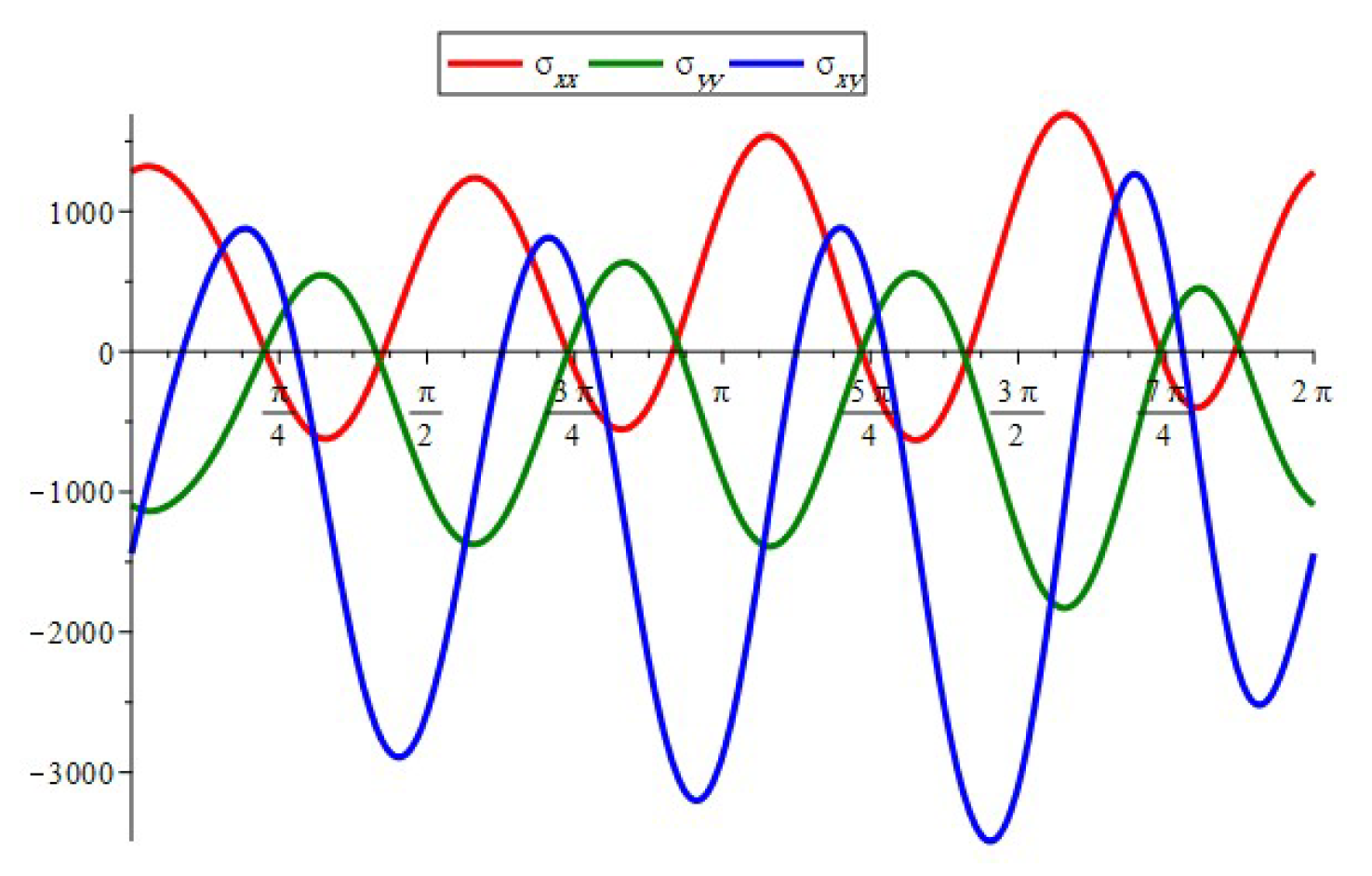
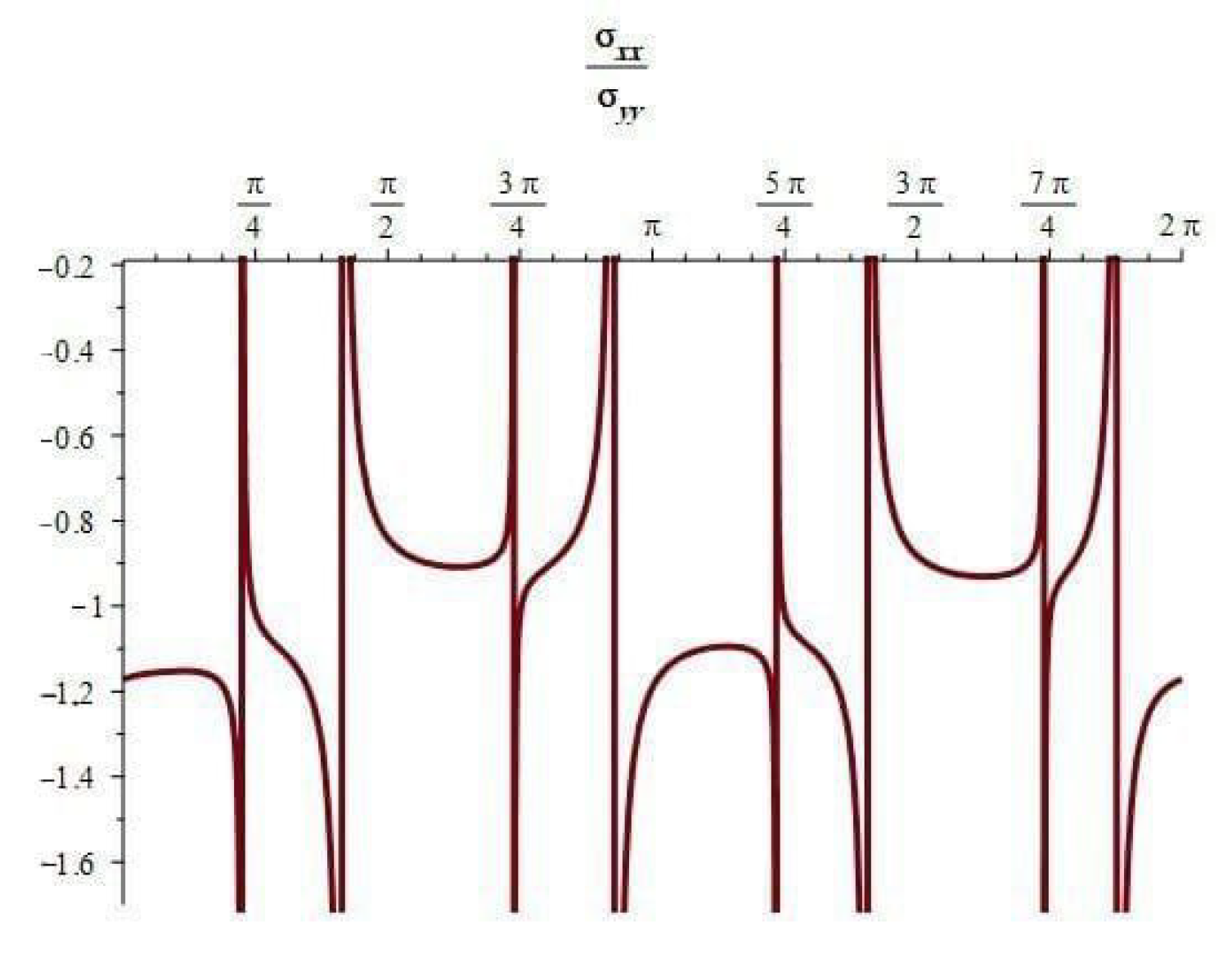
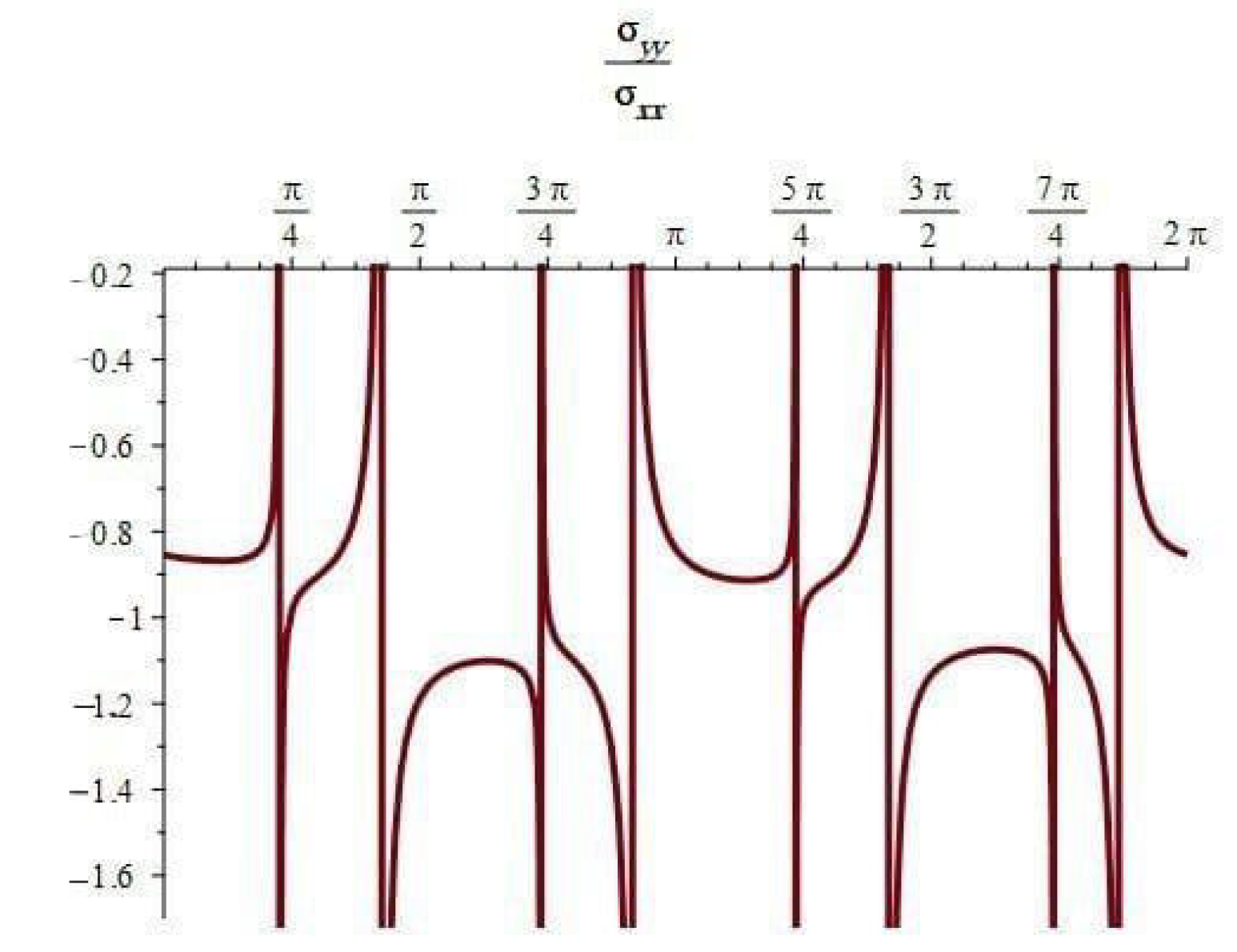

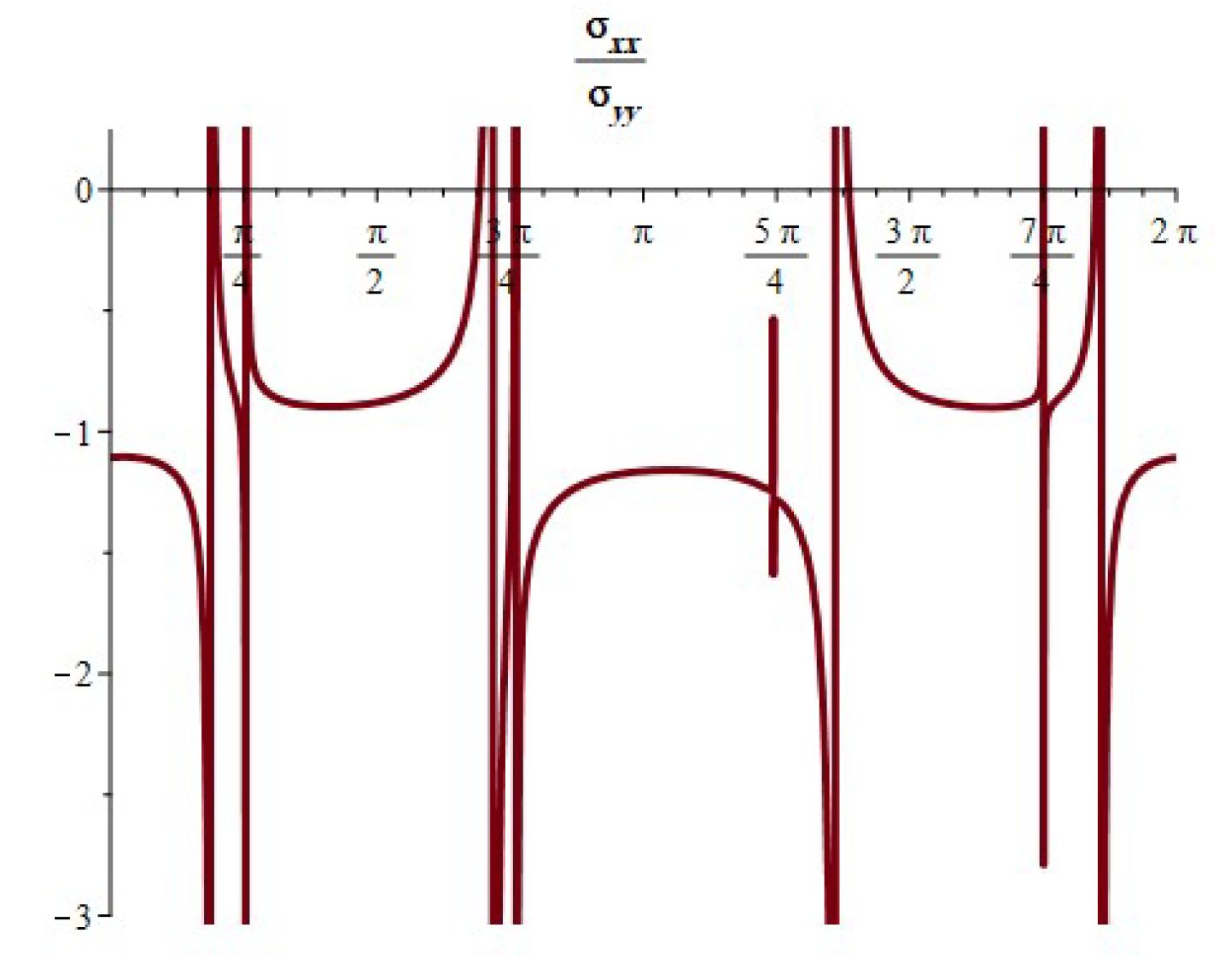
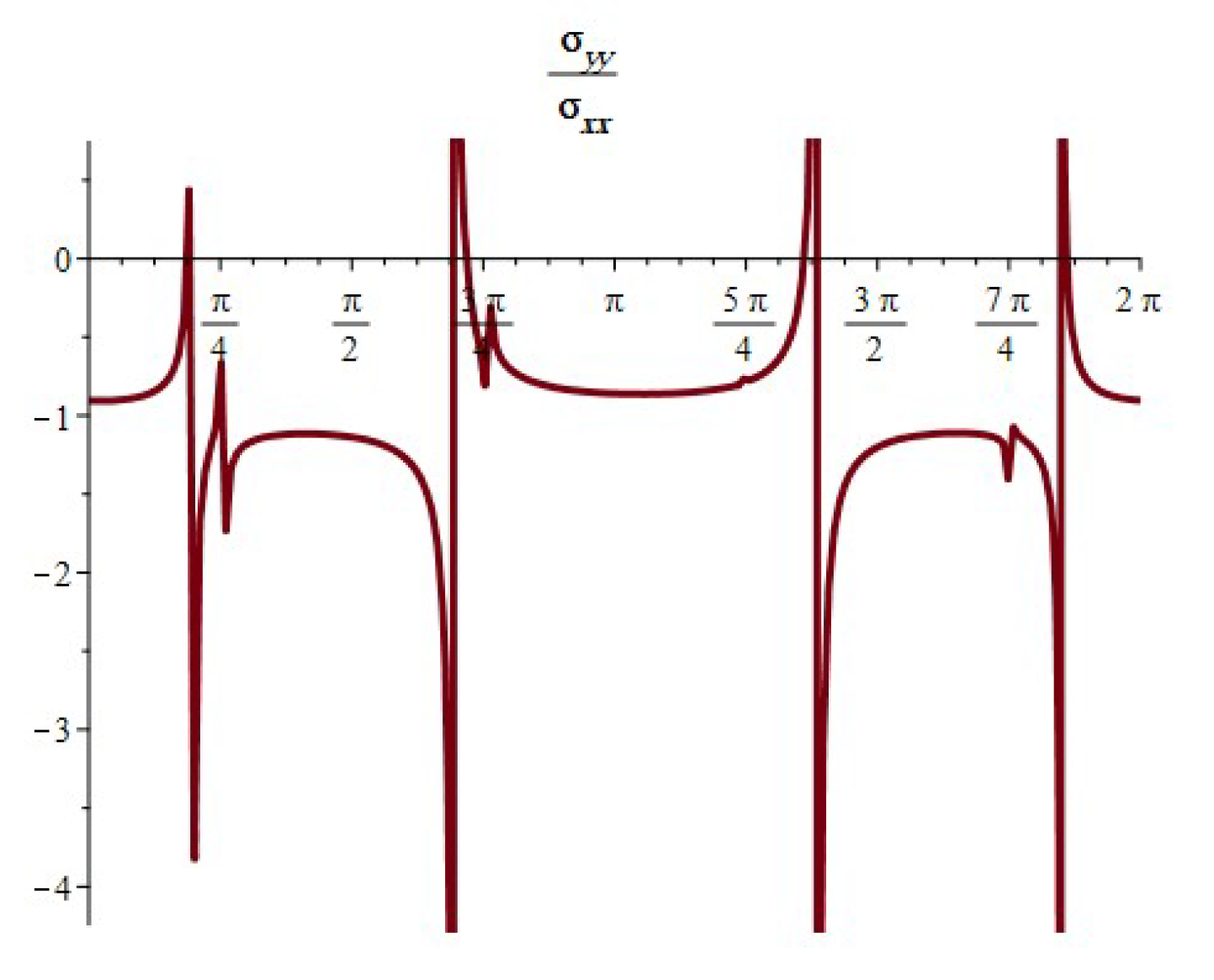
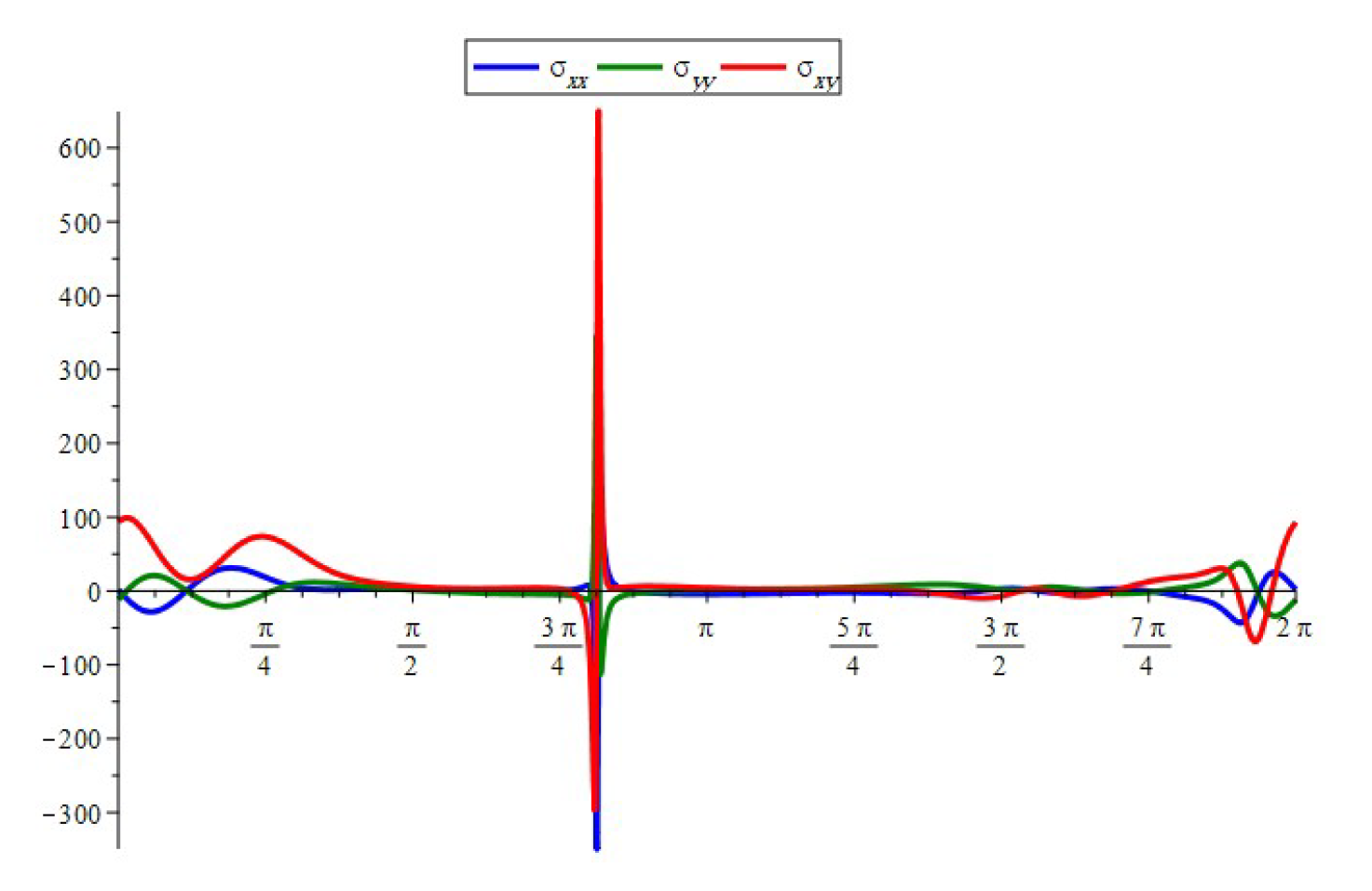

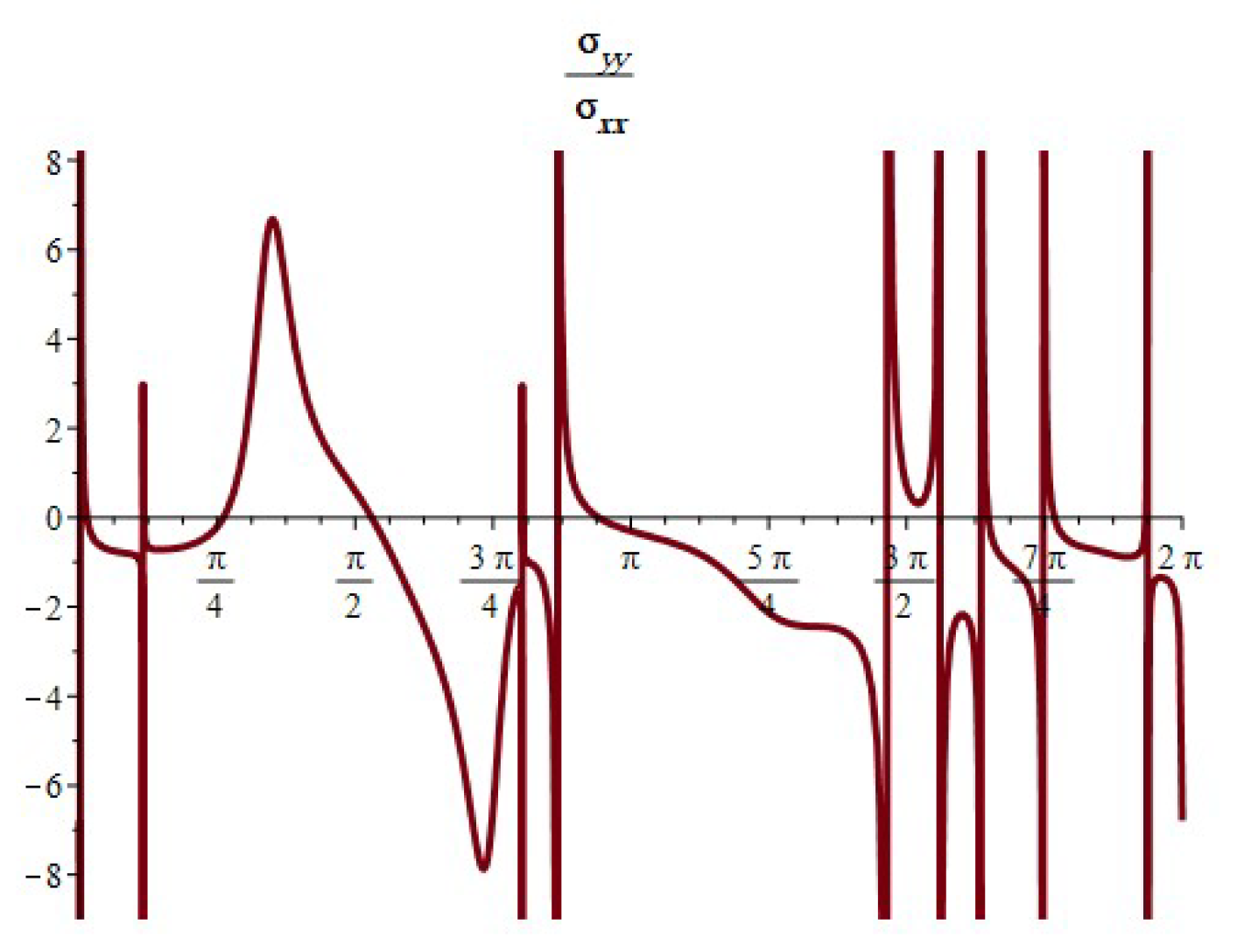
Disclaimer/Publisher’s Note: The statements, opinions and data contained in all publications are solely those of the individual author(s) and contributor(s) and not of MDPI and/or the editor(s). MDPI and/or the editor(s) disclaim responsibility for any injury to people or property resulting from any ideas, methods, instructions or products referred to in the content. |
© 2024 by the authors. Licensee MDPI, Basel, Switzerland. This article is an open access article distributed under the terms and conditions of the Creative Commons Attribution (CC BY) license (https://creativecommons.org/licenses/by/4.0/).
Share and Cite
Alharbi, F.M.; Alhendi, N.G. New Approach of Normal and Shear Stress Components for Multiple Curvilinear Holes Which Weakened a Flexible Plate. Symmetry 2024, 16, 360. https://doi.org/10.3390/sym16030360
Alharbi FM, Alhendi NG. New Approach of Normal and Shear Stress Components for Multiple Curvilinear Holes Which Weakened a Flexible Plate. Symmetry. 2024; 16(3):360. https://doi.org/10.3390/sym16030360
Chicago/Turabian StyleAlharbi, Faizah M., and Nafeesa G. Alhendi. 2024. "New Approach of Normal and Shear Stress Components for Multiple Curvilinear Holes Which Weakened a Flexible Plate" Symmetry 16, no. 3: 360. https://doi.org/10.3390/sym16030360




